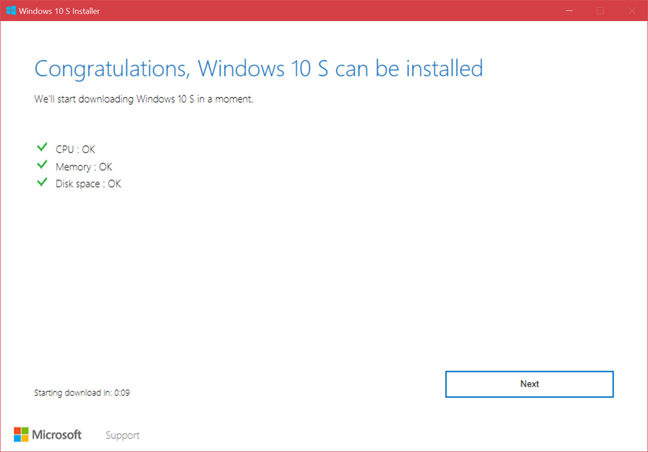
Windows 10 S is now available for download and installation for anyone interested, and on any device. However, there are many limitations and issues to consider and, in this article, we go into detail about them. Here's what you have to take into consideration if you want to use or test Windows 10 S:
Install Windows 10 S from Microsoft: Download link!
Initially, Windows 10 S was made available only on Surface laptop devices. Then, Microsoft made it available for download for MSDN subscribers and now for everyone interested in testing it. If you have a valid license of Windows 10 Pro, Pro Education, Education, or Enterprise, you can download, install and use Windows 10 S. If you use Windows 10 Home, you cannot install Windows 10 S on your computer or device.
Once Windows 10 S is activated on your device, you can reinstall it at any time, without needing another activation code or product key. Also, if you test Windows 10 S and you want to go back to Windows 10 Pro, you can do so from the Windows Store, because your computer or device is already licensed for that edition too.
To download and learn more about Windows 10 S, support devices and drivers, go to this page, read it carefully and download the file "Windows10SInstaller5932.exe".
This file will check your system's compatibility with Windows 10 S, before allowing you to install it. However, do keep in mind that it doesn't always do a great job at verifying everything that Windows 10 S needs to operate properly.
Speaking about issues with Windows 10 S, let's talk about the biggest problems that this edition has:
The main problem of Windows 10 S: Drivers and Office 365 are missing!
Windows 10 S doesn't allow users to install traditional desktop apps unless they are available in the Windows Store. Also, drivers cannot be manually installed by the user, because they are desktop apps. Therefore, drivers either are available through Windows Update, or you cannot install them without special hacks and manual procedures which only very knowledgeable users can perform.
When you look at the Windows 10 S download page, there's a section of supported devices and drivers. There you see listed all the major manufacturers. However, if you don't look at the details for each, you might be misled into thinking that driver support for Windows 10 S is good.
At the time this article was written, manufacturers like MSI, Samsung and Toshiba had no devices with drivers for Windows 10 S. Also, other large manufacturers, like HP, Lenovo and ASUS have only one or two devices with support for Windows 10 S, and some of them weren't released yet.
Your best bet for installing, testing and using Windows 10 S without issues are Microsoft's devices. If you own a Surface 3, Surface Pro 3, Surface Pro 4, the Surface Laptop or the latest Surface Pro tablet, Windows 10 S should run flawlessly.
Another big issue is the availability of Office 365. Microsoft said that it has made it available, but there's a big catch: for now, only Surface Laptop users can install it from the Windows Store. If you own another device, you can't install it and use it. Not even Surface Pro users get access to it. This is a huge issue, and Microsoft should work fast on making it available for all users and all devices.
Your best bet is running Windows 10 S in a virtual machine
If you want a good experience, on any computer or device, then virtualization is your best bet. Run a virtual machine with Windows 10 S on it, and you should be able to use it without any driver issues. Hopefully, Microsoft will improve its support for Windows 10 S in coming months and solve the problems that plague it today.
Did you test Windows 10 S? What is your experience?
At the end of this article, let us know whether you tested Windows 10 S on your devices and what was your experience with it. Is Windows 10 S the future of Windows?


 06.08.2017
06.08.2017 




